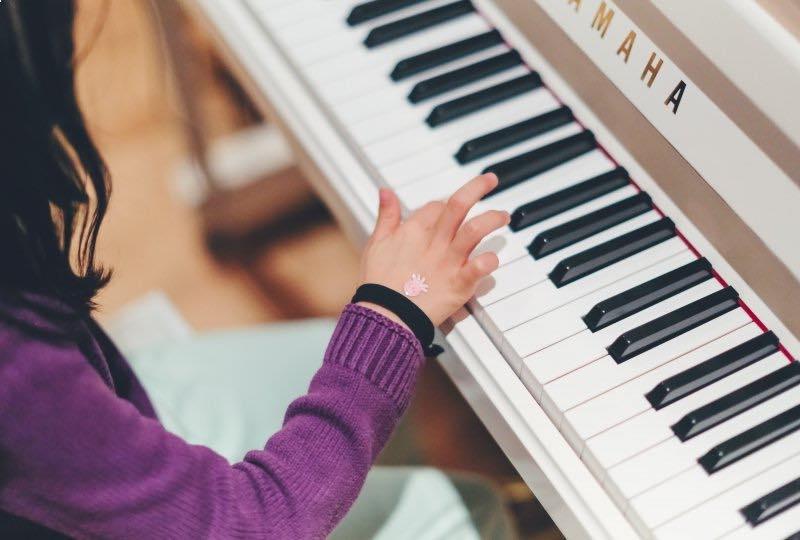Disney songs bring joy and great memories of childhood. Whether you are a young beginner or adult student, these pieces are fun and enjoyable to play – both for yourself and for friends and family.
There are piano arrangements for pretty much every Disney song out there, with varying levels of difficulty and length. Here are some of the easy and intermediate arrangements to delight the beginner learner, listed in order of difficulty. They are chosen from the Faber Piano Adventure series, which are a wonderful collection of method books that are easily accessible.
It’s a Small World – Disney theme (from Faber Piano Adventures, Popular 2A)
Nancy and Randall Faber’s Piano Adventures series is a wonderful collection of piano method books that provide a variety of musical selections from all genres. The ShowTime Piano series includes popular songs, some of which are from Disney. “It’s a Small World” is a classic Disney theme and the arrangement here is great for the elementary beginner!
Faber’s arrangement contains both the verse and chorus, the first in a single melodic line split between the hands while the latter with simple chordal accompaniment in the left hand. The key is in F major, so an understanding of flats is required, as well as how to read notes up to an octave above middle C. The smallest note value is the quarter note. And the rhythm is simple without syncopation (although there are some ties).
This is a wonderful arrangement due to its simplicity and clear melodic line. Because the rhythm is straight-forward and uncomplicated, it allows for easy reading. Lyrics are provided in the score.
I Just Can’t Wait To Be King – The Lion King (from Faber Piano Adventures, Popular 2A)
Another selection from the Faber Popular collection is “I Just Can’t Wait To Be King” from The Lion King. This introduces syncopated eighth-note rhythms. They are not extensive portions of syncopations, but a clear understanding of rhythm and eighth-notes is important. It is arranged in the key of C major but does venture into C minor throughout the piece.
The musical texture still splits the melodic line between the hands in the first half. But this song is less tuneful than the previous example. The repeated notes must be phrased and counted correctly to avoid mechanical playing. The lyrics are also included, which are particularly helpful in learning the notes and rhythm. The chorus also includes left hand chordal accompaniment.
The sprightly tempo could make some of the syncopated rhythm tricky to grasp. So make sure to take it slowly and count out loud first while learning the notes and rhythm.
Part of Your World – The Little Mermaid (from Faber Piano Adventures, Popular 2A)
Another piece that uses syncopated eighth-note rhythms is “Part of Your World” from The Little Mermaid. A similar practice strategy of counting the rhythm beforehand and using the lyrics is recommended to guide the learning of this piece. It is longer than the previous two examples. And has a consistent texture of melodic right hand line over a chordal left hand accompaniment.
Note that because the piece is longer, there are more dynamic changes required and an increased range in notes (about two-and-a-half octaves). Ability to read up to E5 is needed, as well as basic use of the damper pedal.
“Part of Your World” is a good arrangement that utilizes a wider range of expression along with a lovely melodic line. All the pieces provided in the Faber Popular collection includes a teacher duet portion for added variety and fun!
Sleeping Beauty Waltz – Sleeping Beauty/Tchaikovsky (from Faber Adult Piano Adventures, Level 1)
This lovely tune was actually composed by the Russian composer Peter Ilyich Tchaikovsky for the ballet Sleeping Beauty, but most people know it as the theme song of Disney’s The Sleeping Beauty. The three-beat meter is tricky to grasp for the beginner pianist. And the challenges in this piece include the balance of hands between melody and accompaniment. It opens with the melody in the left hand and shifts to the right hand halfway through the piece. The accompaniment chords must be played softly and lightly. Otherwise, the music will not be dance-like!
Additionally, the long legato lines require control of touch and phrasing, as well as good pacing of dynamic changes over the course of the piece. There are no lyrics to this piece, but it is a beautiful tune!
The Perfect Nanny – Mary Poppins (from Faber Piano Adventures, Popular 2A)
This is one of the longer pieces in this collection. While there are less syncopated eighth notes than the previous two pieces, there is a greater variety in articulation, upbeat rhythms, and larger leaps in the melodic line. Additionally, there are flats, sharps, and naturals throughout the piece.
One of the challenges here is the change in meter in the last third of the piece. After the ritardando and fermata, there is one part where the meter changes from four to two. This can be a bit confusing for the beginner learner. Another challenge is the repeated note figure in the second section of the piece, which can cause some finger stumbling in the learning process. But again, use the lyrics to facilitate the rhythm and be sure to count out loud in the beginning!
The upbeat rhythm and changing articulations, however, make this a very fun piece to play. The funny lyrics add to the character, which will surely keep listeners and pianists on their toes.
Enjoy Playing These Disney Songs on Piano
Playing Disney songs on piano is a great way to improve your skills, while also having fun. Check out these and other songs, or recommend your own favorites in the chat below!
Alison Chiang


